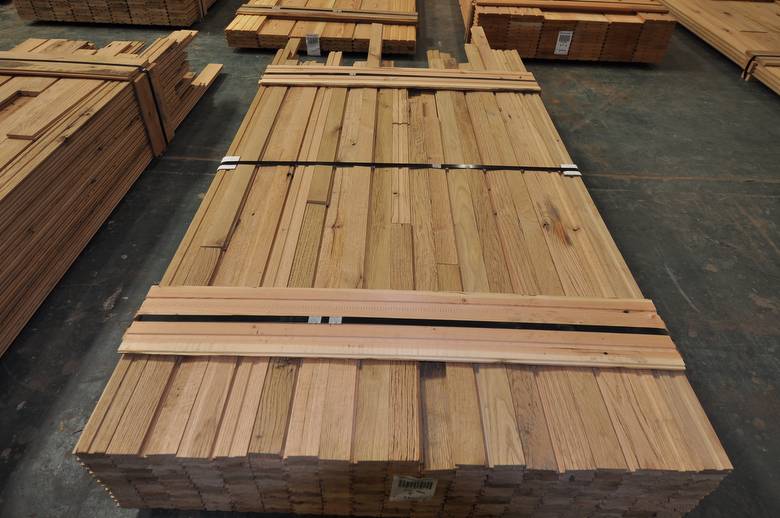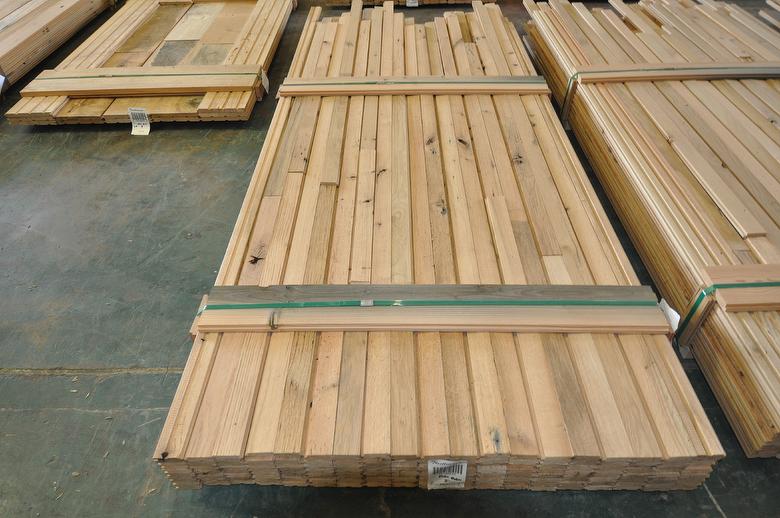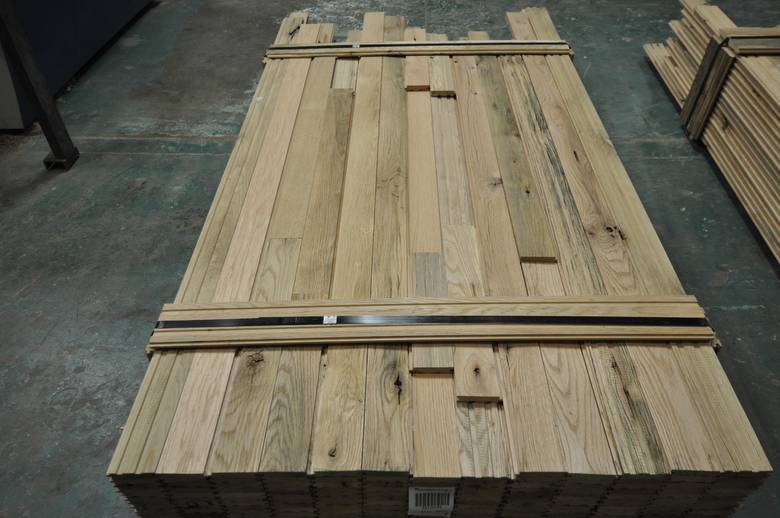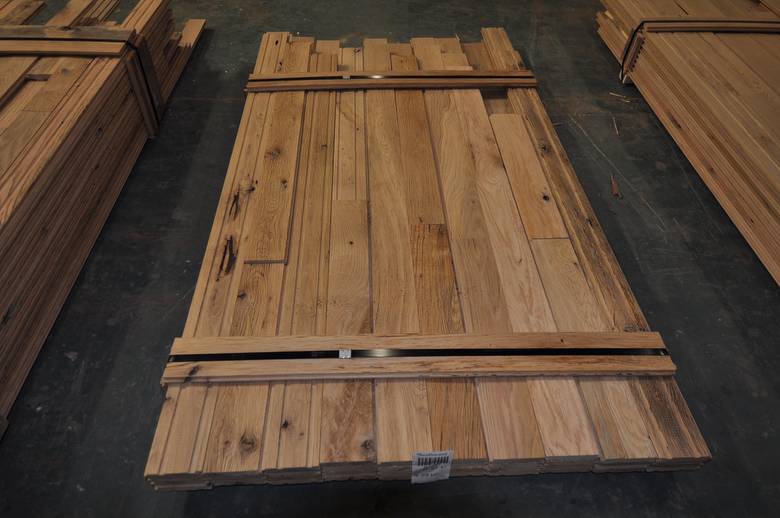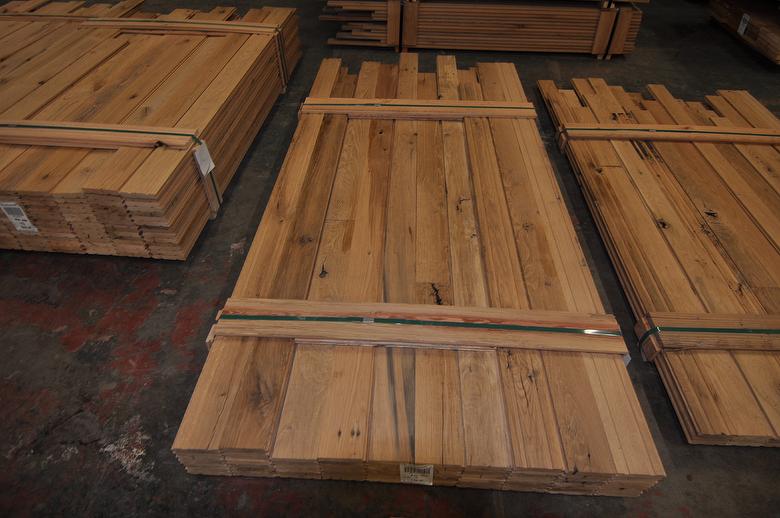2 - 4.5" Antique Oak Smooth T&G Flooring
2 - 4.5" Antique Oak Smooth T&G Flooring
Specification Sheet #6011 - Antique Oak T&G Flooring
Height
Width
Length
Quantity
0.72"
Rand 2-4.5"
Rand 1-7'
min: 250 sf
List Price: $9.25 per sf
Online Price:$8.33 per sf
Request Quote Instead
(large quantities, any customization, etc.)
Height
Width
Length
Quantity
0.72"
Rand 2-4.5"
Rand 1-7'
min: 250 sf
Related Productline Pages
Antique Oak Smooth T&G Flooring
Specification Sheet #6011 - Antique Oak T&G Flooring
Species
Oak (White Oak and Red Oak mixed)
Source
Barns, corncribs, stables, mills, homes and other buildings and agricultural/industrial/construction structures and materials from different locations in North America
Flooring Type
Solid Wood, Unfinished
Profile
Tongue and Groove (T&G)
Knots
Unlimited; some knots are broken, loose or fallen out
Holes
Random nail holes; occasional bolt holes or peg holes. Nail and bolt holes commonly have some stain surrounding the hole.
Checking/Cracks
Moderate surface checking; some cracking is allowed as long as the board is sound.
Grain Pattern
Mixed
Standard Dimensions
a) Thickness: 3/4"; b) Width: 2", 3", 4" and 5"; c) Length: 1' to 10'.
Textures Available
Smooth, Skip-Planed, Circle-Sawn and As-Is
Skip-Planed Texture
Skip-Planed Texture is achieved by using the texture of weathered timbers or lumber and lightly planing that as-is face. The look of the skip-planed material will vary substantially from piece to piece. Some of the characteristics that will vary substantially from piece to piece are: original weathering (brown/gray, deeply checked/relatively smooth); original texture (circlesawn/bandsawn/weathered smooth); species (red/white oak); and color (light tan/pinkish/brown/gray/etc.) Some pieces (roughly 70% of the square footage) will "clean up" entirely and have no skipping.
Because the finish face of Skip-Planed flooring is not entirely milled, there will often be a slight "lip" along the seams where two floor boards come together upon installation. Attention to slight differences from piece to piece may minimize the impact of these differences, but will not eliminate it as an issue entirely.
Because the finish face of Skip-Planed flooring is not entirely milled, there will often be a slight "lip" along the seams where two floor boards come together upon installation. Attention to slight differences from piece to piece may minimize the impact of these differences, but will not eliminate it as an issue entirely.
Appearance Variation
Boards can vary in appearance from piece to piece and even within a piece. The characteristics described on this specification sheet generally apply to each board's featured face. The opposite face and edges can differ from the featured face in texture, coloring, and other characteristics unless otherwise noted.







